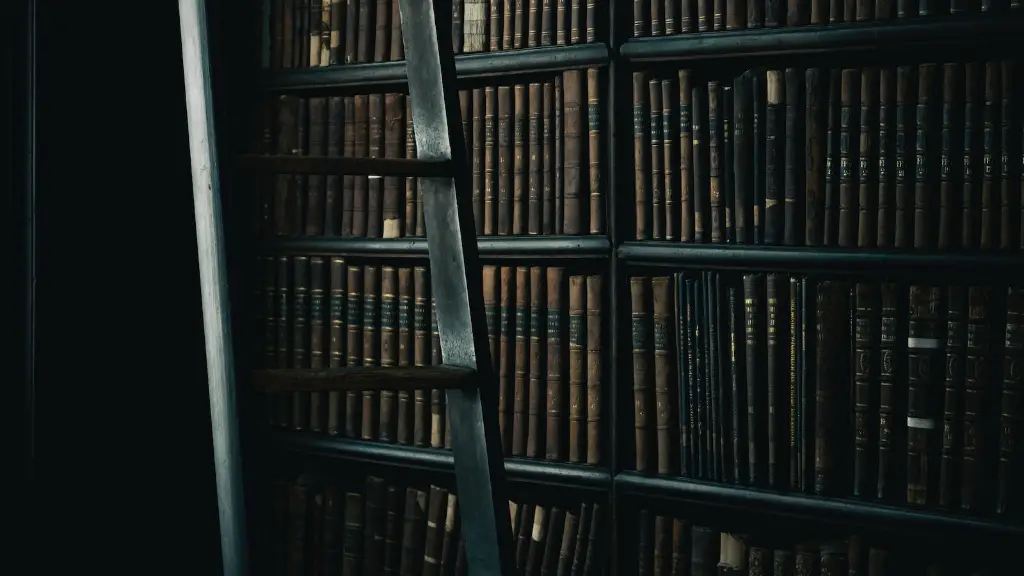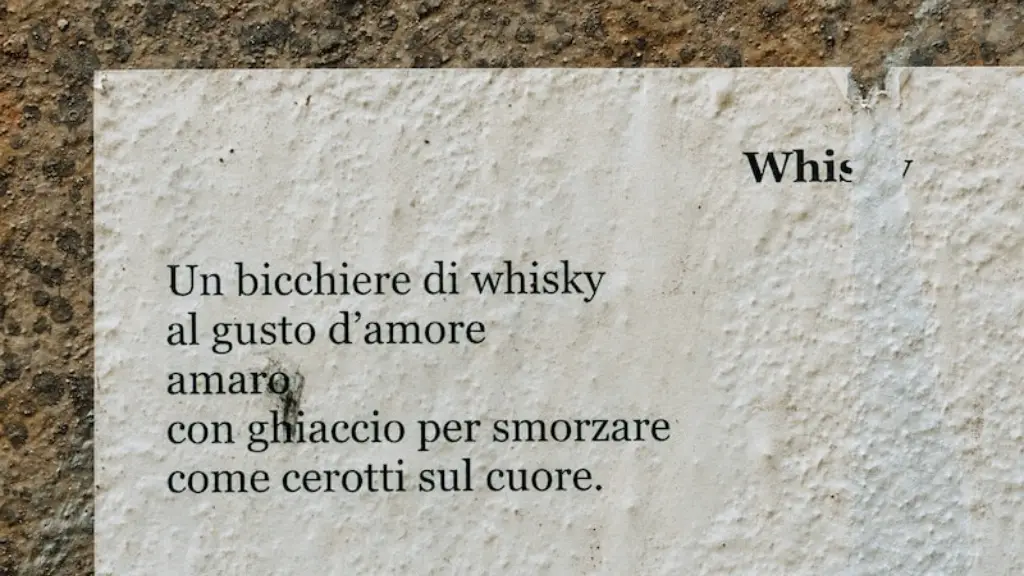Mending Wall by Robert Frost is a popular poem that questions the necessity of boundaries between people, places, and ideas. The poem presents a situation where two men must mend a wall that separates their properties each spring. Frost implies that this wall is both unnecessary and detrimental to their relationship. He presents the idea of neighborliness by showing the men’s understanding that their wall is a necessary barrier between themselves and the world outside. The poem acknowledges the idea that we all build our own walls and construct our own barriers. It reminds us that while walls may be necessary, they can also be a source of pain and hurt. It encourages us to think about the necessity and consequences of walls in our own lives.
Breaking Down the Analysis of ‘Mending Wall’
The poem Mending Wall, by Robert Frost, is filled with rich imagery, symbolism, and metaphors to explore the concepts of boundaries and connectivity. The title alone implies that this poem is about repairing barriers or walls that stand between two people. The wall in the poem is an obvious metaphor for the separation between two people, and its need to be repaired suggests that even though we try to keep each other apart, something needs to be done to bring us closer together. This idea of mending something is also seen in other poems such as The Road Not Taken and Reluctance. In both cases, the speaker is on a journey and must make decisions along the way. To keep the journey going, the speaker must repair or amend certain things.
The imagery of the wall and the barrier between two people is the main motif in the poem. Frost suggests that these walls are not only unnecessary, but also damaging to one’s relationship with another. Throughout the poem, he emphasizes the idea of neighborliness by showing the men’s understanding of the need for a wall between themselves and the world outside. In this way, he encourages us to consider the consequences of walls and to think about the necessity of them. Frost further implies that although walls can be helpful, they can also be harmful.
The theme of neighborliness is further developed in the poem. Frost suggests that relationships with our neighbors are important. He states, “Good fences make good neighbors.” This phrase has become a universal proverb, but in this context, it implies that barriers between people can be a way to promote harmony. Additionally, Frost implies that when people open themselves up to others and are willing to mingle and converse, barriers become unnecessary. He highlights the importance of being open to others and taking an active role in forming relationships.
The poem can also be seen as a commentary on the nature of change. Frost points out that the only thing that ever changes in the physical landscape is the gap in the wall, which has to be fixed each year. He suggests that things stay the same when too much change is resisted. But, at the same time, he also implies that bouts of change can be beneficial and can bring progress, such as mending the wall each spring. This is a subtle way of showing that change should be embraced and allows for growth and improvement.
Mending Wall by Robert Frost is a timeless and thought-provoking poem. It explores the power of neighborliness, the need for boundaries and the concept of change in an interesting and unique way. By examining the poem, we can gain insight into the importance of relationships and understanding between individuals, the need for boundaries, and the positive effects that can come from small acts of change.
An Analysis of Robert Frost’s Use of Language
Robert Frost is well-known for his use of language. He uses metaphors and symbols to explore the human condition and convey a powerful message. He often portrays a situation in a simple way to allow readers to connect with the content on a personal level. In Mending Wall, Frost presents the wall as a literal and figurative barrier in a very vivid manner. He utilizes imagery to show how the barriers that separate people can be symbolic of deeper divisions. He makes use of the terms “good” and “bad” to act as a contrast to how the wall is viewed. He suggests that the wall has both positive and negative implications for the protagonists.
Frost also makes use of dialect, rhyme, and alliteration. He incorporates the voices of two men in the poem, represented as “my neighbor” and “I”. When reading the poem, it can feel as if the speakers are having a conversation or making a joke. The dialogue between them helps to build the story of the poem and brings the characters to life. Additionally, Frost uses many poetic devices, such as rhyme and alliteration. For example, in the lines: “But here there are no stones/To prove the wall is there.” The rhyme and alliteration used here are effective in eliciting an emotional response from the reader.
Frost’s use of language in Mending Wall has enabled him to convey a strong message in a poetic and poetic form. His use of imagery, dialect, rhyme, and alliteration allows him to explore the complexity of the human condition. Through his ability to create vivid images and use of symbolism, Frost has been able to touch on the importance of relationships, the need for boundaries, and the positive effects of change. Furthermore, by incorporating the voices of two men in the poem, Frost emphasizes the importance of communication and connection between two people.
The Symbols and Imagery of the Wall in ‘Mending Wall’
The poem Mending Wall, by Robert Frost, explores the theme of boundaries and connectivity. The wall in the poem is a metaphor for the separation between two people. Frost uses symbols and imagery to demonstrate the importance of relationships and understanding between individuals. He also highlights the need for boundaries and how they can be both beneficial and destructive in nature.
Frost utilizes imagery such as “stumbling blocks”, “frosty silence”, and “clawing weeds” to portray the wall in a tangible and creative way. The imagery of the wall provides readers with a sense of reality and helps to build the story of the poem. The imagery allows readers to connect with the characters and better understand the situation being presented. Furthermore, Frost’s use of symbols gives the poem a deeper meaning. He alludes to the idea of friendship and neighborliness by referring to the men’s mutual understanding that the wall is necessary.
Frost also mentions the idea of change in the poem. He implies that the only thing that ever changes in the physical landscape is the gap in the wall, which has to be fixed each year. This could be seen as a sign of progress and allows room for growth and improvement. With this in mind, Frost suggests that it is sometimes necessary and beneficial to embrace small changes.
The imagery of the wall in Mending Wall represents the idea of separation, communication and connectivity. By using symbols and imagery, Frost explores the concepts of boundaries, relationships, and the importance of the individual. Moreover, the poem demonstrates the power of symbols in bridging gaps between people. It is an effective way of exploring the complexities of the human condition and conveys a powerful message.
The Role of Nature in ‘Mending Wall’
The poem Mending Wall, by Robert Frost, focuses on the theme of boundaries and interpersonal relationships. The poem explores the power of neighborliness, the need for boundaries, and the concept of change. Throughout the poem, Frost suggests that nature plays an important role in this. He uses images of nature, such as trees, rocks and fields, to emphasize the need for boundaries and to highlight the importance of relationships.
The poem begins with an image of two men walking through a field. This image is used to introduce the wall and to establish the relationship between the two men. Additionally, Frost mentions the actions of natural elements, such as the sending of rain and the melting of snow. This allows readers to gain an understanding of how nature affects the wall and how the wall affects the two men. Furthermore, Frost mentions how animals, such as the squirrels, can break the wall apart. This symbolizes how something as natural as wildlife can have an effect on the relationship between two people.
Frost also utilizes imagery of leafless trees and decaying leaves to demonstrate the idea of change. It shows that small changes can have big effects, much like mending the wall each spring. It also suggests that change should be embraced and can lead to growth and improvement. The imagery of these natural elements is used to further emphasize the themes of the poem.
The role of nature in Mending Wall is an important one. Frost uses imagery of the natural world to explore the complexities of the human condition. It demonstrates the power of neighborliness and encourages us to consider the need for boundaries and the consequences of change in our own lives. By using natural imagery, Frost has been able to create a powerful poem that touches on many different aspects of life.
The Historical Context of ‘Mending Wall’
Mending Wall, by Robert Frost, is a popular poem. It has been widely analyzed and is considered to be one of Frost’s greatest works. The poem was written during a tumultuous time in history, in which there was a contentious relationship between the United States and its colonial power, Great Britain. It is thought that Frost was influenced by this situation when writing the poem and that the wall in the poem is meant to represent the division between these two powers.
Additionally, the poem was written during a time of rapid industrialization, urbanization and immigration. The poem was likely meant to comment on this and Frost may have been attempting to suggest that while maintaining a barrier between people can be necessary, it can also be harmful. The poem conveys the idea that relationships are important and that we must strive to build bridges and to be open to different ideas and people.
At the time when the poem was written, the first World War had just ended and the United States was entering a period of economic growth. It is likely that the phrase “good fences make good neighbors” was meant to imply that healthy boundaries between different nations and political powers. Frost may have been attempting to convey the idea that by coming together and working in partnership, nations can avoid conflict and promote stability.
The historical context of the poem Mending Wall plays an important role in its interpretation and reception. By writing the poem during a politically tumultuous time, Frost was able to explore the complexities of the human condition and to convey a powerful message. He was able to comment on the need for relationships and understanding between individuals, the importance of boundaries, and the positive effects of change. The poem has stood the test of time and continues to be relevant today.





